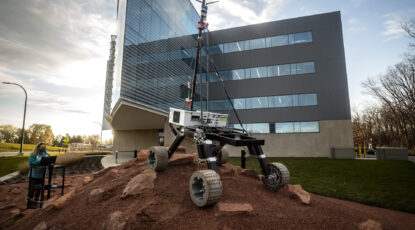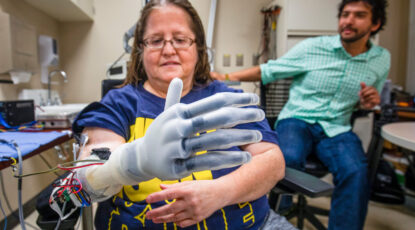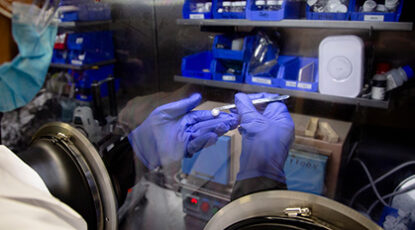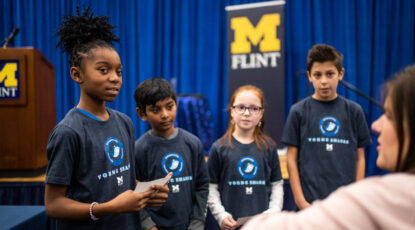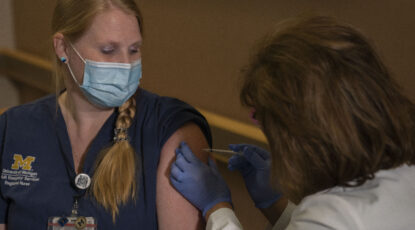Innovation
-
Choose your own adventure
Experience an earthquake, frolic on Mars, and chase a robot up the stairs. It’s just another dazzling day at U-M’s Ford Motor Company Robotics Building, now open for mind-bending business.
-
Sticking the landing on Mars: High-powered computing reduces guesswork
NASA’s Mars Perseverance Rover touched down on the Red Planet’s surface Feb. 18. U-M’s Jesse Capecelatro has been working with NASA to better understand what happens during landings when surface particles are stirred up.
-
How to make the robot revolution serve the people
The Ford Robotics Building, at $75 million and 140,000 square feet, is set to open soon. Features include an indoor fly zone for autonomous aerial vehicles, an outdoor playground for walking robots, a high-bay garage for self-driving cars, and more.
-
$9.95M for ‘smart intersections’ across Ann Arbor
Ann Arbor will soon be home to more than 20 “smart intersections”—capable of gathering and transmitting information in real time to connected cars—as part of a University of Michigan effort to demonstrate the safety potential of connected and automated vehicles.
-
U-M publishes free guides packed with advice and wisdom from COVID-19 patients, caregivers
Practical tips for COVID-19 hospital and post-hospital care available for anyone to use, and for any hospital or health system to adapt and publish.
-
‘Holy grail’ battery doubles the range of electric vehicles
Lithium metal batteries can double the capacity of today’s standard lithium-ion cells, and much of the existing manufacturing system is primed for production, say experts at U-M. Let’s roll!
-
‘Young Sharks’ gives fourth graders an entrepreneurial edge
A creative UM-Flint program exposes elementary school-aged children to business, startups, and all the possibilities that can spring from their curiosity and creativity.
-
Is the end in sight?
Get an inside look at the COVID-19 vaccine development and approval process with U-M Professor of Epidemiology Arnold Monto. He is the acting chair of the FDA’s Vaccines and Related Biological Products and Advisory Committee.
-
Michigan Medicine vaccinates first employees for COVID-19
Michigan Medicine began vaccinating people against COVID-19 Dec. 14 with an initial group of five frontline workers.

